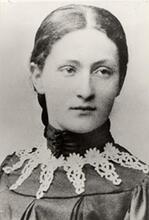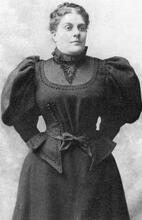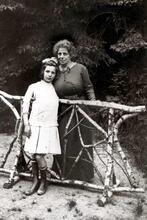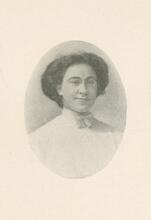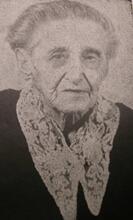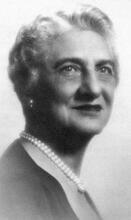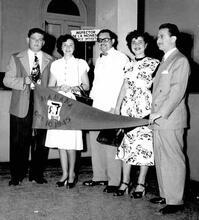Bessie Cleveland Stern
Bessie Cleveland Stern is most recognized for her work as statistician for the Maryland Board of Education. She collected and interpreted data about the Maryland school system from 1921 through 1948, and school officials turned to her for information to support appropriations measures and proposed changes in state laws relating to the schools. Miss Bessie, as she was known, was also active in civic affairs and involved in many different civic organizations. She was a member of many school associations and active in the United Nations Association, the city and state libraries, the Central Scholarship Bureau, and the Public Administration Society.
Article
Bessie Cleveland Stern is most recognized for her work as statistician for the Maryland Board of Education. She collected and interpreted data about the Maryland school system from 1921 through 1948, and school officials turned to her for information to support appropriations measures and proposed changes in state laws relating to the schools. Miss Bessie, as she was known, was also active in civic and musical affairs. She led the business and professional unit of the Baltimore League of Women Voters from 1949 to 1964.
Bessie Cleveland Stern was born in Hornell, New York, on February 14, 1888. Her parents, Leopold and Julia (Mehlinger) Stern were Jewish. They moved their family to Buffalo, New York, when Bessie was twelve years old. She began studying piano at age six, studied at the Peabody Conservatory, and continued to give recitals after she was eighty years old. Bessie attended high school in Buffalo, then won a scholarship to Cornell University, where she received her B.A. in 1909 and was elected to Phi Beta Kappa.
She taught German and French from 1909 to 1910 at the Silver Creek High School in New York before beginning her long career as a statistician, using her talents for educational reform and improvement. From 1911 to 1918, she was examiner and statistician for the New York City Board of Estimates and Apportionment and the Committee on Education. Near the end of World War I, she moved to Washington, D.C., as statistician for the U.S. Shipping Board (1918–1919). She was office manager at a silk mill, Arthur & Walter Price, in Paterson, New Jersey, from 1919 to 1920 before returning to school, receiving a master’s in education from Harvard University in 1921. Other education included Goucher College, Columbia University, and the University of Chicago. She taught statistics and educational administration at Johns Hopkins University.
In 1921, Stern began her tenure with the recently created Bureau of Measurements of the Maryland State Board of Education. She was director of finance, statistics, and educational measurements at the Maryland State Department of Education until her retirement in 1948. She instituted an annual statewide reporting system for attendance, age level, and study progress to assess the twenty-three-county public school system.
In addition to the League of Women Voters, Stern’s civic activities included serving as treasurer for the National Association for the Study of Platoon Schools (1928–1931), member of the Maryland Conference on Social Work, and secretary of the State Directors of Educational Research (1932–1934). She was also active in the United Nations Association, the city and state libraries, the Central Scholarship Bureau, and the Public Administration Society.
Stern belonged to many other civic organizations. Professional memberships included the American Association of School Administrators, the Department of Superintendence of National Education Association, Maryland State Teachers Association, American Education Research Association, and the American Statistical Association. Hood College awarded her a citation in 1951.
After a long illness, Bessie Cleveland Stern died on March 29, 1979, at a nursing home in Towson, Maryland.
Maryland Department, Enoch Pratt Free Library, Baltimore.
Who’s Who in World Jewry, 1972.
WWIAJ, 1938.

